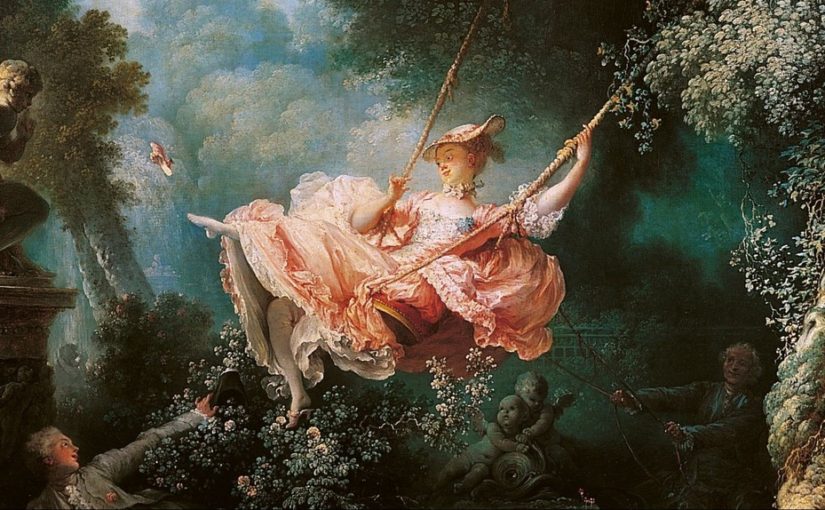No harm will come to me. The Assembly is prepared to treat us leniently. - Marie Antoinette
I’ve been musing about the direction that America is moving towards for some time now. In these musings I wonder what it must have been like for other oligarchies and their leadership when the torches and pitchforks came out. Let’s recall what happened in France to the wealthy living within their comfortable bubble of security.
Let’s look at what it was like for Marie Antoinette. One day, eating cake on fine china, surrounded by attendants in opulent attire, and the next day sitting in a dingy dungeon awaiting death.
In 1793, she was convicted by the Revolutionary Tribunal of high treason and was executed by guillotine on October 16, 1793.
The days preceding Marie Antoinette’s execution were excruciating. She was imprisoned, endured allegations of incest, and her hair went white overnight from shock. All the time, the entire nation loathed her, for she became the image of everything that was wrong with France at that time. She was the scapegoat.
- How Marie Antoinette’s Vicious Death Ballads Defined Her …
- The Execution Of Marie Antoinette: The Last Queen Of …
- Marie Antoinette, Queen Executed in French Revolution
- File:Marie Antoinette being taken to her Execution, 1794 …
- The Execution of Marie-Antoinette. The days of the directoire.
- Marie Antoinette’s Death: The Final Days Before Her Beheading
True or not. Justified or not. It does not matter. She was used as the scapegoat, and suffered for her position and role within society.
The anti-Marie Antoinette propaganda was uniform and relentless. She couldn’t do anything right. If she wore lavish clothing, she was considered to be “out of touch”. When she wore “commoner clothing” she was considered to be “fake and insulting”.
It was a lose-lose proposition.
Much like the anti-China narrative going on now out of the American Media during the Trump Trade War.
Marie Antoinette – the final moments.
Marie Antoinette: the very name of the doomed queen of France, the last of the Ancien Régime, evokes power and fascination. Against the poverty of late 18th-century France, the five syllables evoke a cloud of pastel-colored indulgence, absurd fashions, and cruel frivolity, like a rococo painting sprung to life.

The real life, and death, of Marie Antoinette is certainly as fascinating. Falling from the Olympus-on-earth of Versailles to the humble cell of the Conciergerie and ultimately the executioner’s scaffold, the last days of the last real Queen of France were full of humiliation, degradation, and blood.
Life At The Conciergerie
Tucked away in its cavernous halls, Marie Antoinette’s life at the Conciergerie couldn’t have been more divorced from her life of luxury in Versailles. Formerly the seat of power for the French monarchy in the Middle Ages, the imposing Gothic palace lorded over the Île de la Cité in the center of Paris as part administrative center, part prison during the reign of the Bourbons (her husband’s dynasty).
The final 11 weeks of her life were spent in a humble cell at the Conciergerie, much of which she likely spent reflecting on the turns her life — and France — took to bring her from the top of the world to the guillotine’s blade.
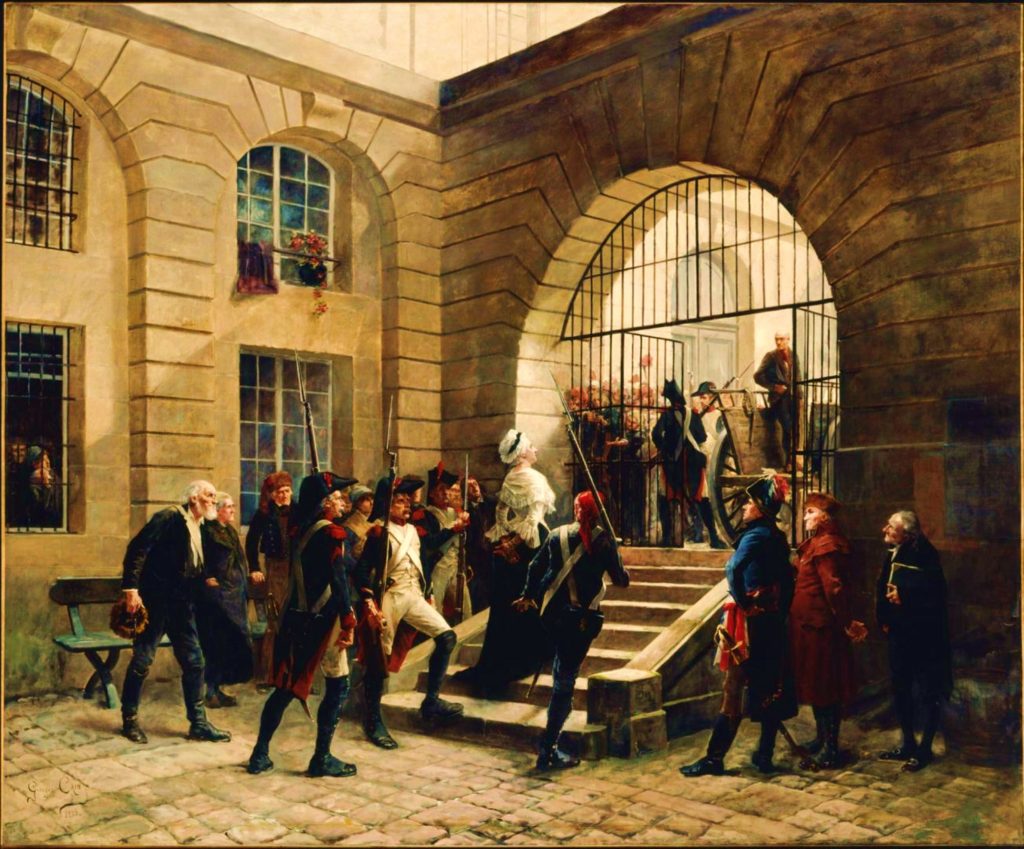
Marie Antoinette wasn’t even French. Born Maria Antonia in 1755 Vienna to Empress Maria of Austria, the young princess was chosen to marry the dauphin of France, Louis Auguste, when her sister was found an unsuitable match. In preparation to join the more formal French court, a tutor instructed young Maria Antonia, finding her “more intelligent than has been generally supposed,” yet also warned that “She is rather lazy and extremely frivolous, she is hard to teach.”
The Years Preceding Marie Antoinette’s Death
Marie Antoinette embraced the frivolity that came so naturally to her in a way that stood out even in Versailles. Four years after coming to the heart of French political life, she and her husband became its leaders when they were crowned king and queen in 1774.
She was only 18, and was frustrated by her and her husband’s polar opposite personalities. “My tastes are not the same as the King’s, who is only interested in hunting and his metal-working,” she wrote to a friend in 1775.
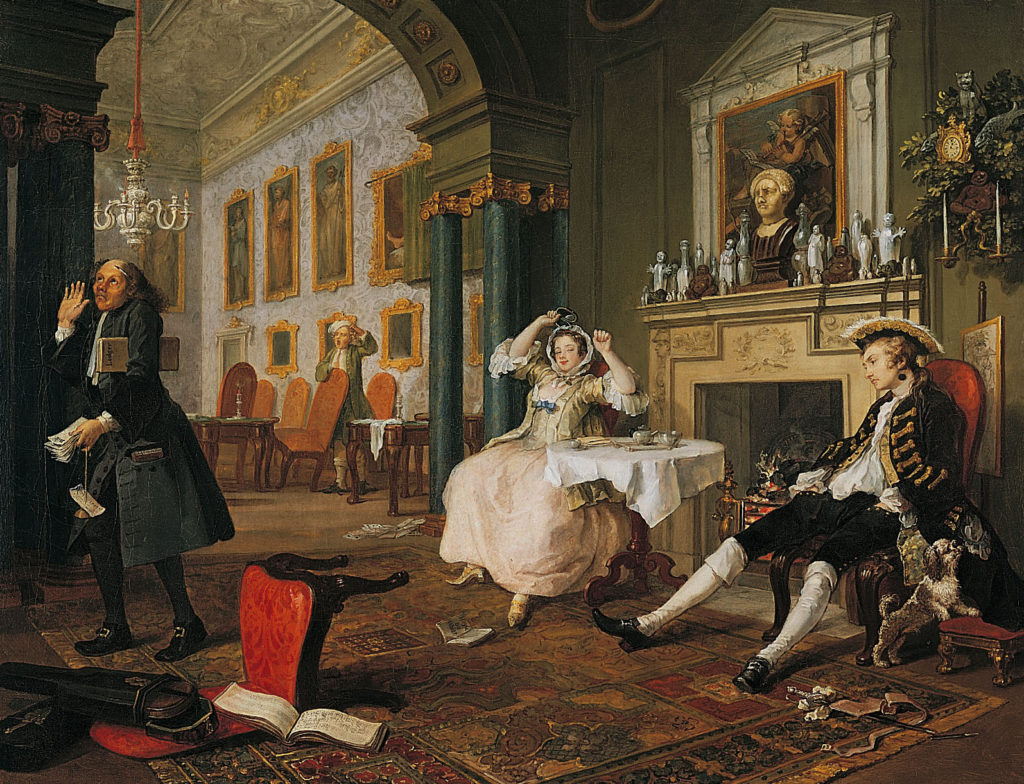
Marie Antoinette threw herself into the spirit of the French court — gambling, partying, and purchasing. These indulgences earned her the nickname “Madame Déficit,” while the common people of France suffered through a poor economy.
Madame Deficit During her reign, Marie Antoinette became a hate symbol for those wishing to overthrow the privilege and power of the French Aristocracy. French society suffered from a deep class divide and she became known as Madame Deficit for her lavish spending. She was especially hated for the money she spent refurbishing the Palace of Versailles, particularly, her mini-estate, the Petit Trianon. Even though it had been built for the previous King’s mistress, it became associated with the Queen, and how out of touch with reality she was.
Yet, while reckless, she was also known for her good heart in personal matters, adopting several less fortunate children.
A lady-in-waiting and close friend even recalled: “She was so happy at doing good and hated to miss any opportunity of doing so.”
Smear Campaign Prior to Louis XVI, the politically themed pornographic pamphlets and books that circulated through France would focus on the King’s mistresses, who were subject to ridicule, and considered promiscuous for their part in the King’s affairs. Louis had no mistresses, and therefore, critics unfairly turned their attention towards the Queen. Creating propaganda that portrayed the Queen as immoral was a way for revolutionaries to “prove” that the monarchy was corrupt, and they insinuated that she slept with several men and women, including her brother-in-law.
Whether deserved or not. The government running France for decades had plundered it. The wealthy elites treated the peasants as deplorable peasants not worthy of spitting upon. They considered them rabble.
Marie became the face for all the hate and anger.
The Monarchy And Revolution
However soft her heart was one-on-one, to the underclass of France grew to consider her a scapegoat for all of France’s ills. People called her L’Autrichienne (a play on her Austrian heritage and chienne, the French word for bitch).
The “diamond necklace affair” made matters even worse, when a self-styled countess fooled a cardinal into purchasing an exorbitantly expensive necklace on the queen’s behalf — even though the queen had previously refused to buy it. When news got out about the debacle in 1785, and people thought Marie Antoinette had tried to get her hands on a 650-diamond necklace without paying for it, her already shaky reputation was ruined.
Affair of the Diamond Necklace In 1785, a scandal known as “The Affair of the Necklace” shocked the French court, and it would eventually be used as an example to discredit the French Monarchy. It began with the procurement of a diamond necklace worth 1,600,000 livres (about $10,000,000 USD) by the Comtesse de La Motte, supposedly for the Queen. In reality, it was for herself and her associates. Though the fraud was eventually exposed and the Queen proved innocent, the damage was done, and became one of the factors leading to the dissolution of the old order, and to the French Revolution.
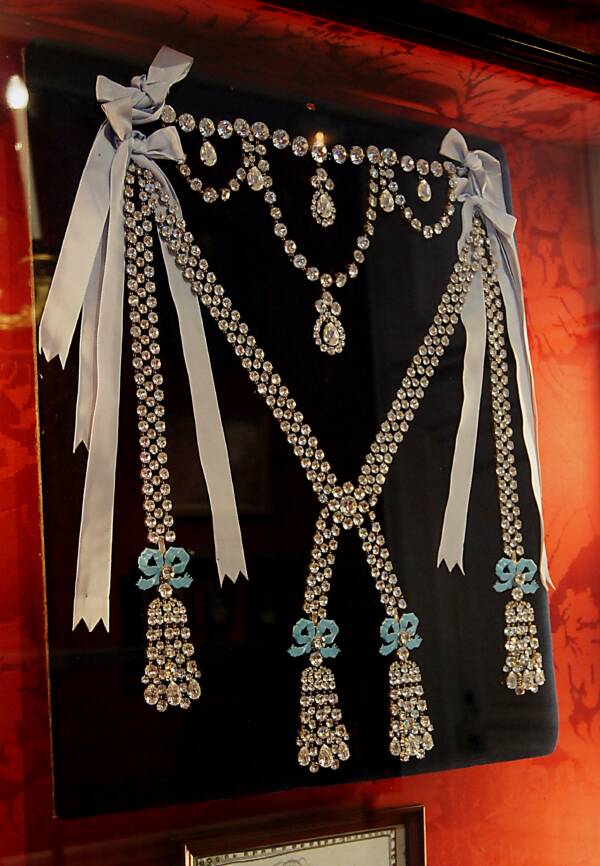
Inspired by the American Revolution — and the fact that King Louis XVI put France into an economic depression in part by paying to support the Americans — the French people were itching for a revolt.
And while it simmered for a spell. It eventually exploded into the open.
Madame Veto With the country straining under the pressure of debt and a stagnating economy, Louis XVI proposed reforms to end the worst of the excesses, and to impose a more progressive taxation system. The reforms were blocked by clergymen and the nobility, but the press blamed Marie Antoinette, labeling her “Madame Veto.” There’s little evidence to prove whether or not she ever did veto the proposals.
Then came the summer of 1789. Parisians stormed the Bastille prison, freeing political prisoners from the symbol of Ancien Régime power. In October of that year, the people rioted over the exorbitant price of bread, marching 12 miles from the capital to the golden gates of Versailles.
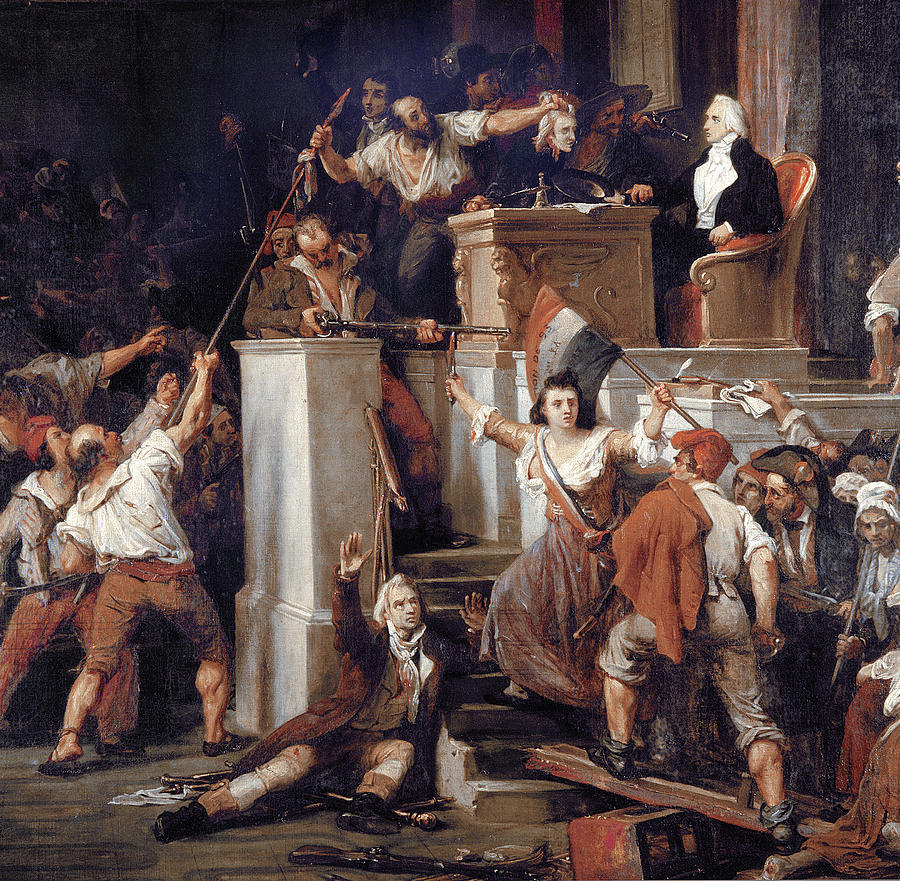
Legend has it that a frightened Marie Antoinette charmed the mostly-female mob from her balcony, bowing to them from above. The mob’s threats of violence turned into shouts of “Long live the queen!”
But the queen wasn’t soothed. “They are going to force us to go to Paris, the King and me,” she said, “preceded by the heads of our bodyguards on pikes.”
She was prescient; members of the crowd, carrying pikes topped with the heads of the royal guards, captured the royal family and took them to Tuileries Palace in Paris.
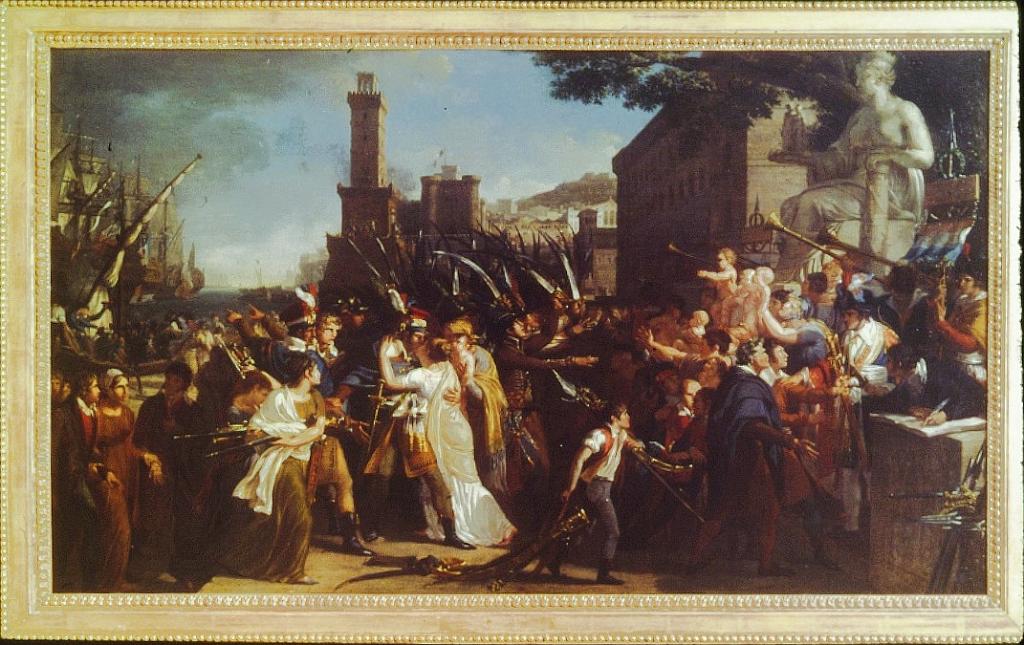
The royal couple wasn’t officially arrested until the disastrous Flight to Varennes in June 1791, in which the royal family’s mad-dash to freedom in the Austria-controlled Netherlands crumbled thanks to poor timing and a too-large (and too-conspicuous) horse-drawn coach.
The royal family was imprisoned in the Temple and on Sept. 21, 1792 the National Assembly officially declared France a republic. It was a precipitous (albeit temporary) end to the French monarchy, which had ruled over Gaul for representing the fall of a nearly a millennium.
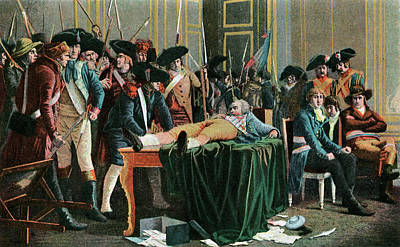
The Death Of Marie Antoinette
In January 1793, King Louis XVI was sentenced to death for conspiring against the state. He was allowed to spend a few short hours with his family until his execution before a crowd of 20,000.
Marie Antoinette, meanwhile, was still in limbo. In early August she was transferred from the Temple to the Conciergerie, known as “the antechamber to the guillotine,” and two months later she was put on trial.

She was only 37 years old, but her hair had already turned white, and her skin was just as pale. Still, she was subjected to an excruciating 36-hour trial crammed into just two days. Prosecutor Antoine Quentin Fouquier-Tinville aimed to denigrate her character so that any crime she was accused of would seem more plausible.
Thus, the trial began with a bombshell: According to Fouquier-Tinville, her eight-year-old son, Louis Charles, claimed to have had sex with his mother and aunt. (In reality, historians believe he made up the story after his jailer caught him masturbating.)
Marie Antoinette replied that she had “no knowledge” of the charges, and the prosecutor moved on. But minutes later a member of the jury demanded a response to the question.

“If I have not replied it is because Nature itself refuses to answer such a charge laid against a mother,” the former queen said. “I appeal to all mothers here present – is it true?”
Her composure in court may have ingratiated her with the audience, but it didn’t save her from death: In the early hours of October 16, she was found guilty of high treason, depletion of the national treasury, and conspiracy against the security of the state. The first charge alone would have been enough to send her to the guillotine.
Her sentence was inevitable. As historian Antonia Fraser put it, “Marie Antoinette was deliberately targeted in order to bind the French together in a kind of blood bond.”
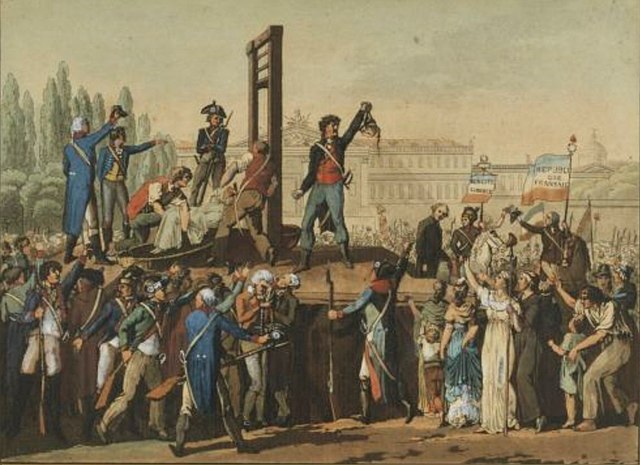
Shortly before she met the guillotine, most of her snow-white locks were cut off.
At 12:15 p.m., she stepped on the scaffold to greet Charles-Henri Sanson, the notorious executioner who had just beheaded her husband 10 months earlier.
Though the man in the black mask was an early supporter of the Guillotine machine, he probably never dreamed he’d have to employ it on his former employer, the queen of France.
Marie Antoinette, clad in simple white so different from her signature powder-blue silks and satins, accidentally stepped on Sanson’s foot. She whispered to the man:
“Pardon me sir, I didn’t mean to.”
Those were her last words.
After the blade fell, Sanson held up her head to the roaring crowd, which shouted “Vive la République!”
Marie Antoinette’s remains were taken to a graveyard behind the Church of Medeleine about half a mile north, but the gravediggers were taking a lunch break. That gave Marie Grosholtz — later known as Madame Tussaud — enough time to make a wax imprint of her face before she was placed in an unmarked grave.

Decades later, in 1815, Louis XVI’s younger brother exhumed Marie Antoinette’s body and gave it a proper burial at the Basilica of Saint-Denis. All that remained of her, besides her bones and some of her white hair, were two garters in mint condition.
It Wasn’t Her Fault Despite claims from sources such as Mary Wollstonecraft and Thomas Jefferson, Marie Antoinette’s excessive spending was not the true cause of the French Revolution. When she and Louis XVI took the throne, the country was already broke, and the treasuries were empty. While her spending certainly didn’t help France’s economic problems, it didn’t break the proverbial bank. Louis’ unpopular and expensive decision to send troops to America to help with the American Revolution was a much bigger cost, but Marie Antoinette made an easy scapegoat.
Conclusion
When society is stratified, it historically collapses as the “have nots” kill (and in this case, decapitate) the wealthy “haves”.
If America somehow escapes this cycle of events, it will be a miracle. All and every tell-tale are screaming “ALARM! ALARM!” at what is right down the tracks. My own predictions place some near catastrophic events in the 2024 / 2025 time period. Let’s see what happens.
Keep in mind that history repeats. And no… America is NOT special. It is following the historical precedents.
If you enjoyed this post, please feel free to read others in my SHTF index here…
SHTF ArticlesArticles & Links
You’ll not find any big banners or popups here talking about cookies and privacy notices. There are no ads on this site (aside from the hosting ads – a necessary evil). Functionally and fundamentally, I just don’t make money off of this blog. It is NOT monetized. Finally, I don’t track you because I just don’t care to.
- You can start reading the articles sequentially by going HERE.
- You can visit the Index Page HERE to explore by article subject.
- You can also ask the author some questions. You can go HERE to find out how to go about this.
- You can find out more about the author HERE.
- If you have concerns or complaints, you can go HERE.
- If you want to make a donation, you can go HERE.

